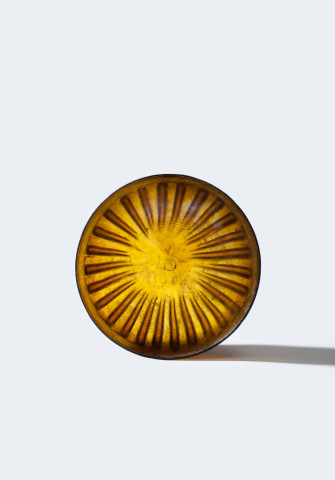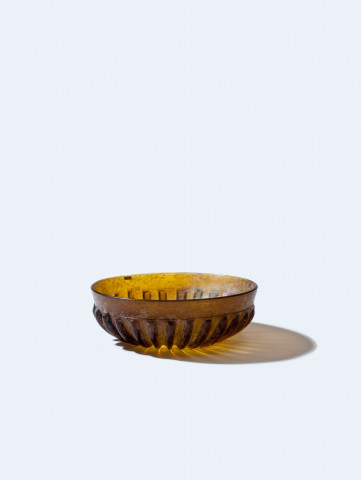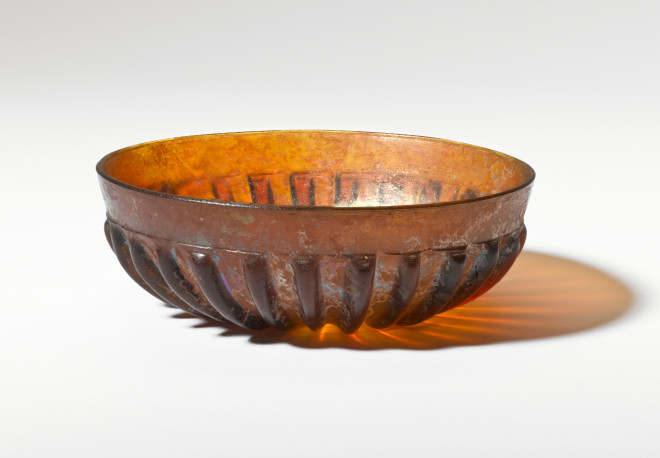Roman pillar-moulded bowl, Eastern Mediterranean, 1st century BC-1st century AD
Glass
Height: 5cm, diameter: 14.7cm
9246
%3Cdiv%20class%3D%22title_and_year%22%3E%3Cem%3ERoman%20pillar-moulded%20bowl%3C/em%3E%2C%20%3Cspan%20class%3D%22title_and_year_year%22%3EEastern%20Mediterranean%2C%201st%20century%20BC-1st%20century%20AD%3C/span%3E%3C/div%3E%3Cdiv%20class%3D%22medium%22%3EGlass%3C/div%3E%3Cdiv%20class%3D%22dimensions%22%3EHeight%3A%205cm%2C%20diameter%3A%2014.7cm%3C/div%3E%3Cdiv%20class%3D%22price%22%3E%C2%A3%2014%2C900%3C/div%3E
Cast in amber glass, wheel-cut lines on the exterior beneath the gently flaring rim, the upper wall polished, a ridge above the crisply moulded vertical ribs. The interior is smooth,...
Cast in amber glass, wheel-cut lines on the exterior beneath the gently flaring rim, the upper wall polished, a ridge above the crisply moulded vertical ribs. The interior is smooth, the floor decorated with wheel-cut concentric circles. Intact, some light iridescence to the interior, an annealing floor to one rib.
It was in the Hellenistic period, glass came to be cast in moulds, which allowed for a larger production quantity and greater variety of form, where previously all glass had been core-formed. Pillar-moulded bowls had the upper ends of the ribs sliced off, leaving traces of polishing and buffing around the plain neck. The interior also buffed, leaving traces of concentric circles.
Provenance
Private collection, France
Literature
Compare Nina Kunina, Ancient Glass in the Hermitage Collection (St. Petersburg, 1997), fig.54





